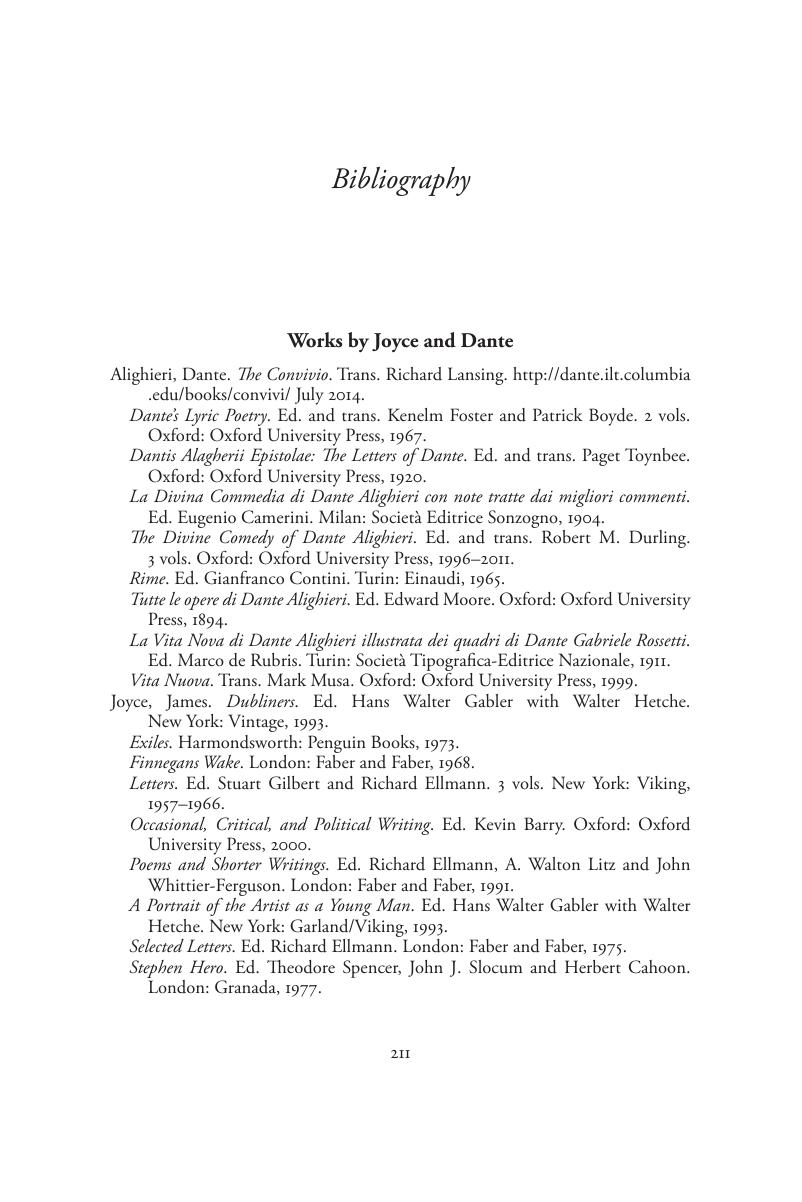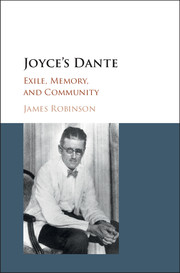Book contents
- Joyce’s Dante
- Joyce’s Dante
- Copyright page
- Dedication
- Contents
- Book part
- Note on Texts and Editions
- Introduction
- Chapter 1 Uneasy Orthodoxy
- Chapter 2 ‘Spiritual-heroic Refrigerating Apparatus’
- Chapter 3 The Poetics of Infernal Metamorphosis
- Chapter 4 The Mothering of Memory
- Chapter 5 ‘The Flower that Stars the Day’
- Epilogue
- Bibliography
- Index
- References
Bibliography
Published online by Cambridge University Press: 13 October 2016
- Joyce’s Dante
- Joyce’s Dante
- Copyright page
- Dedication
- Contents
- Book part
- Note on Texts and Editions
- Introduction
- Chapter 1 Uneasy Orthodoxy
- Chapter 2 ‘Spiritual-heroic Refrigerating Apparatus’
- Chapter 3 The Poetics of Infernal Metamorphosis
- Chapter 4 The Mothering of Memory
- Chapter 5 ‘The Flower that Stars the Day’
- Epilogue
- Bibliography
- Index
- References
Summary

- Type
- Chapter
- Information
- Joyce's DanteExile, Memory, and Community, pp. 211 - 226Publisher: Cambridge University PressPrint publication year: 2016



